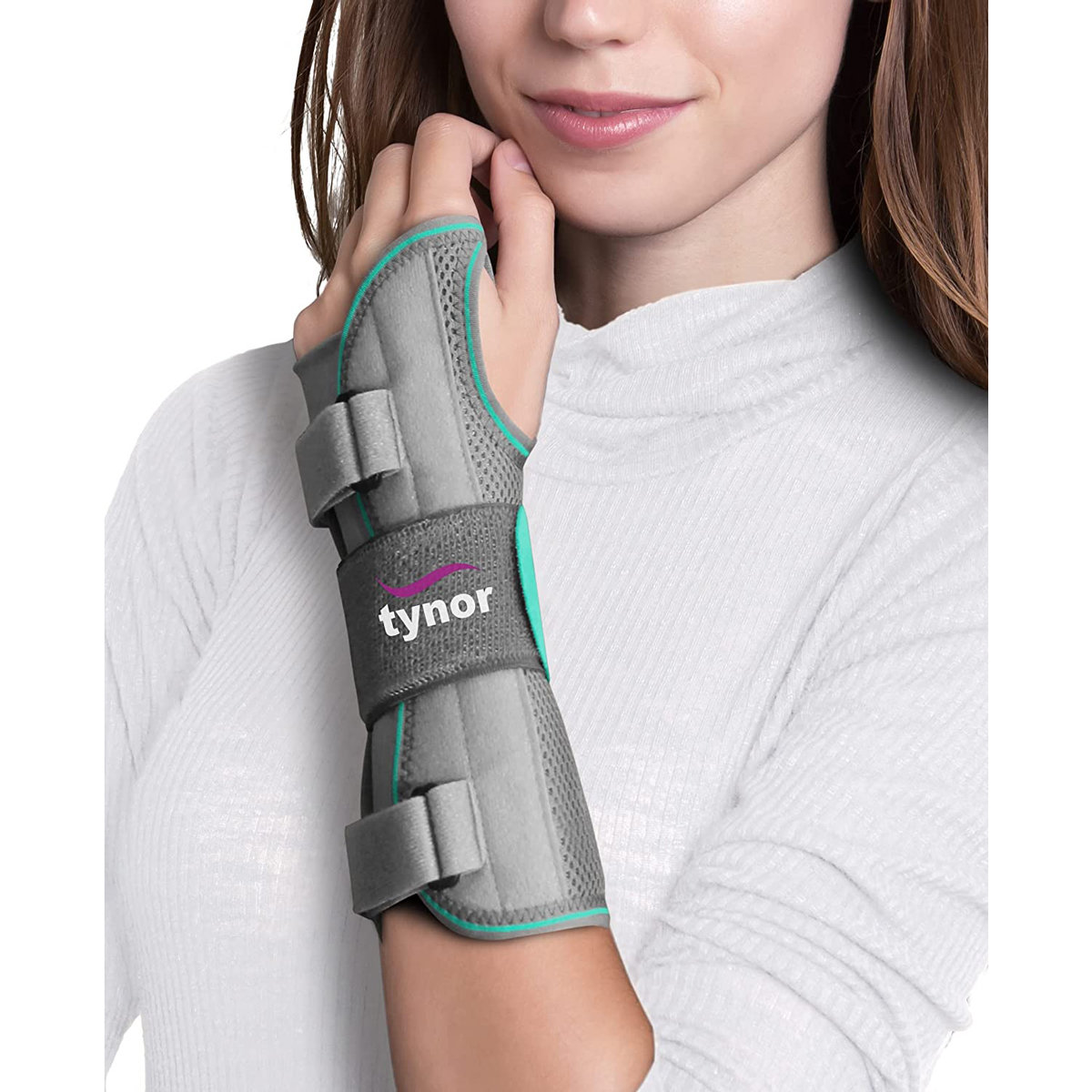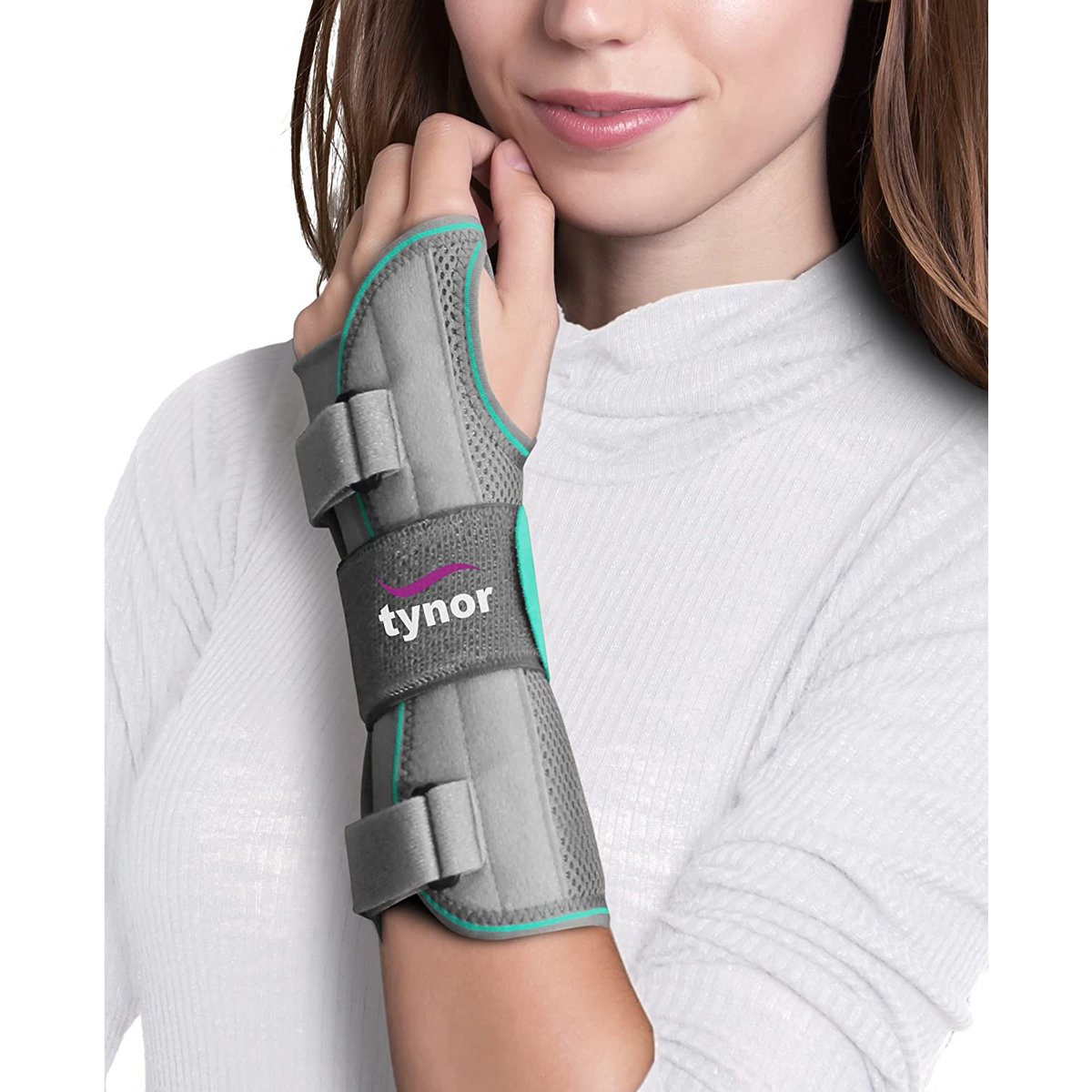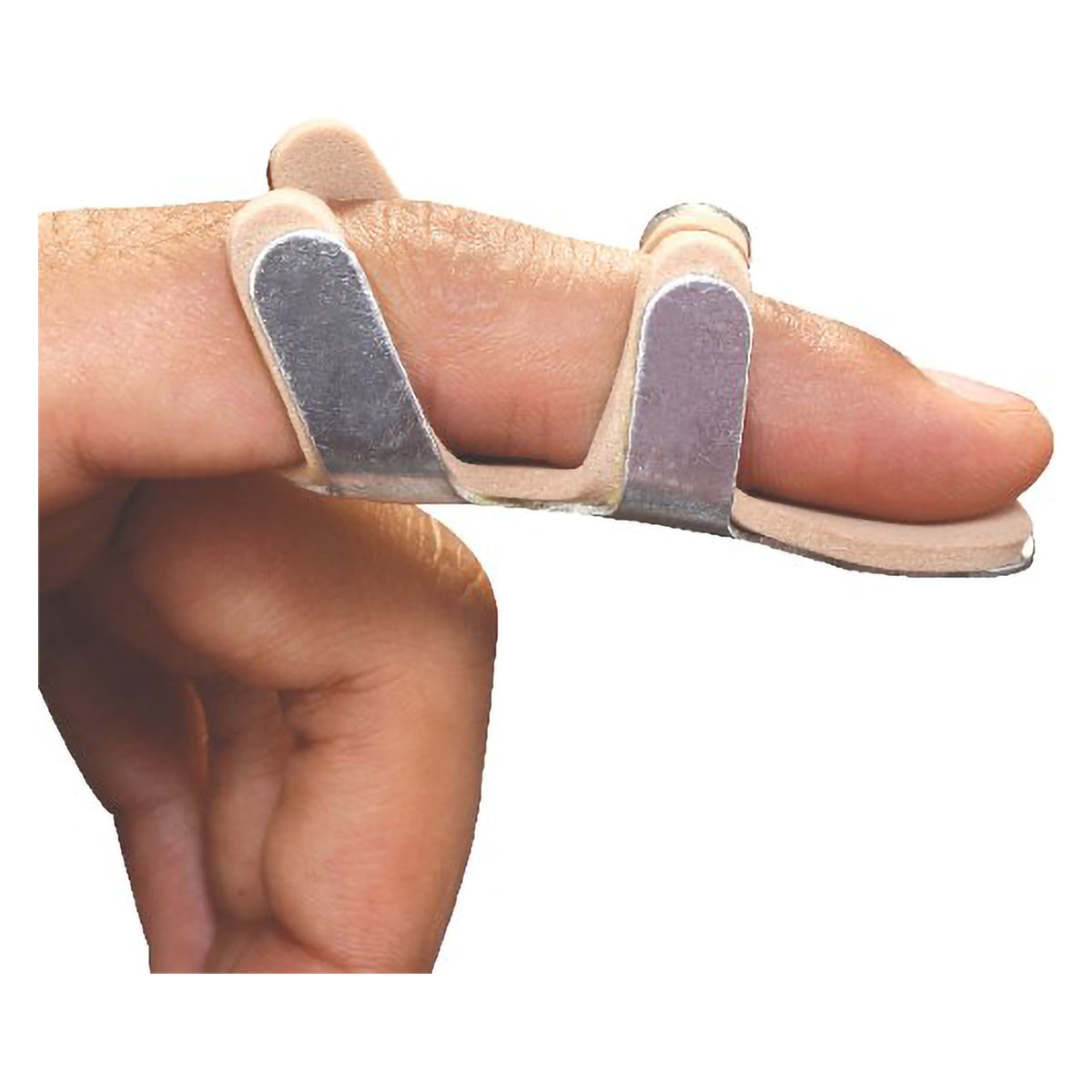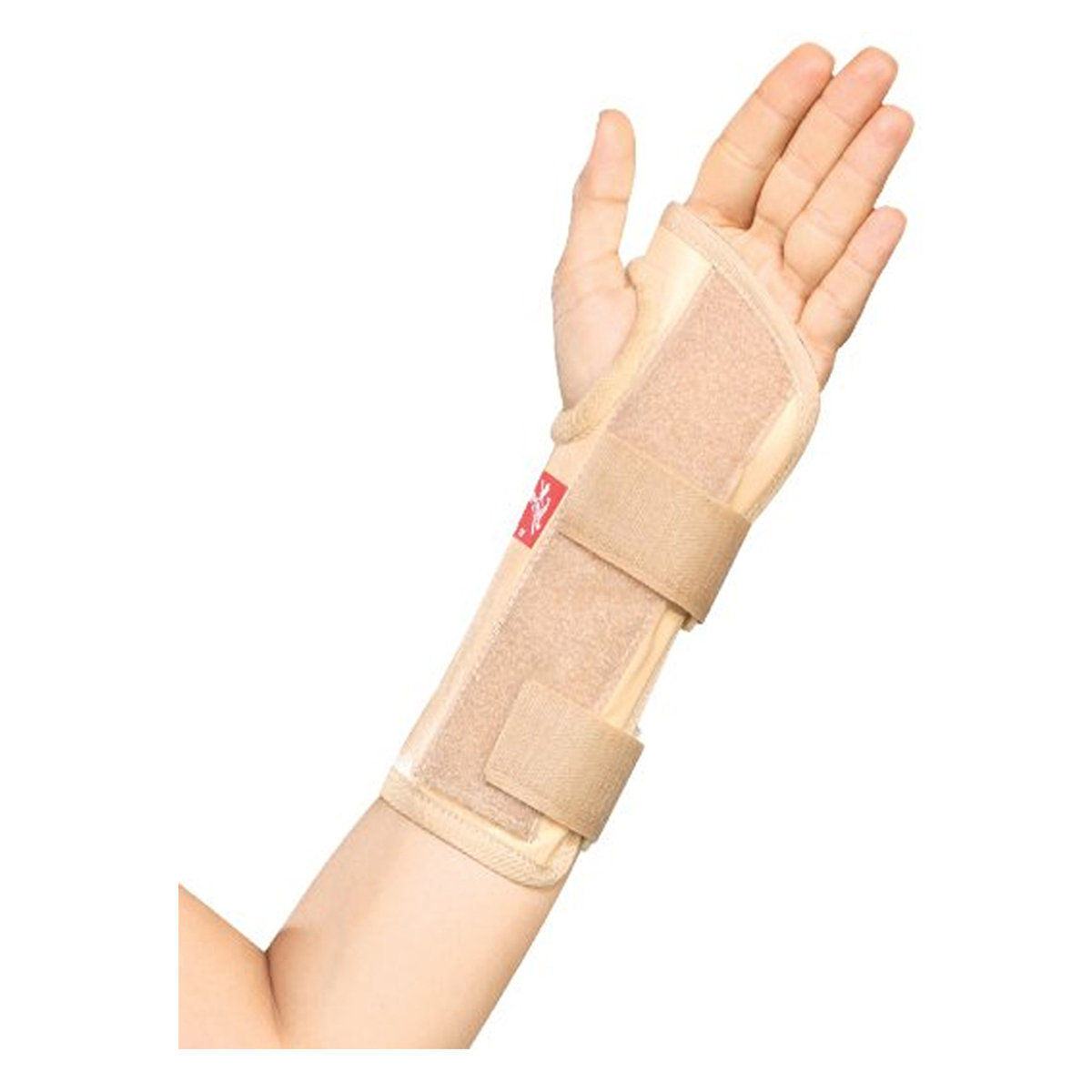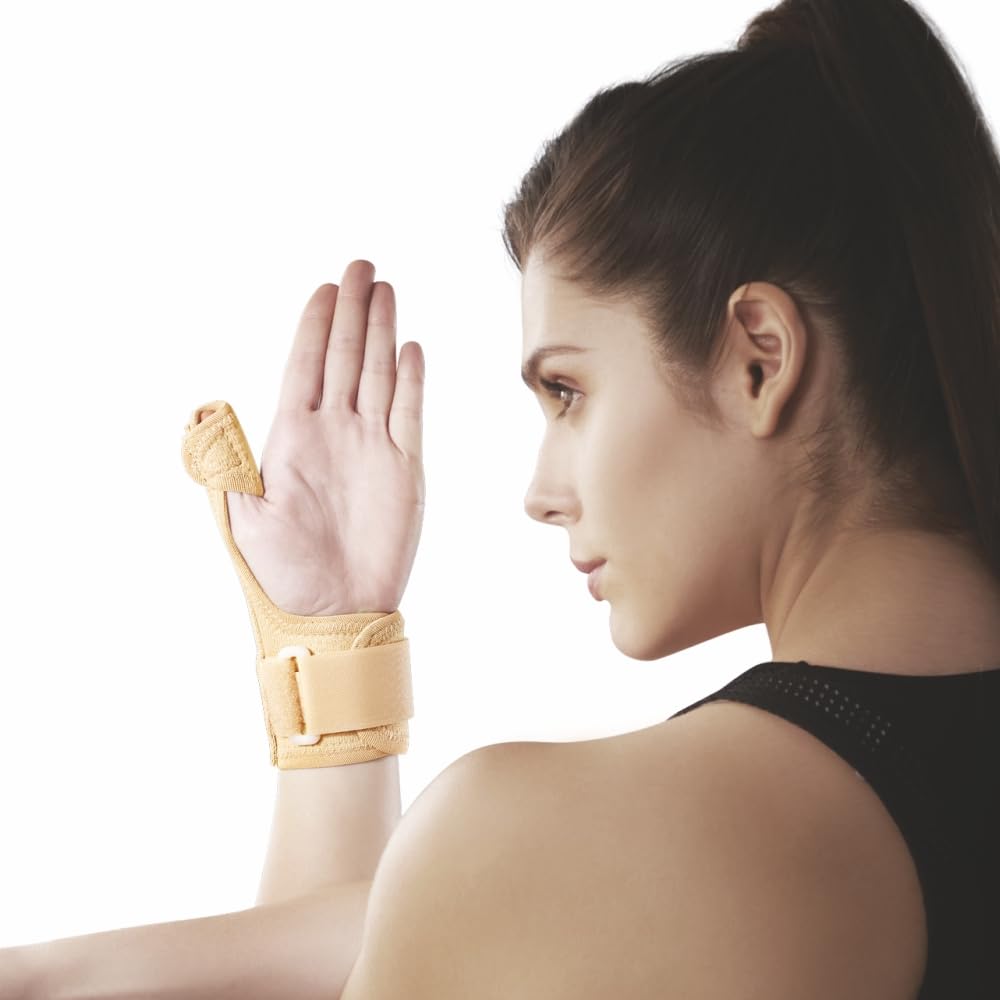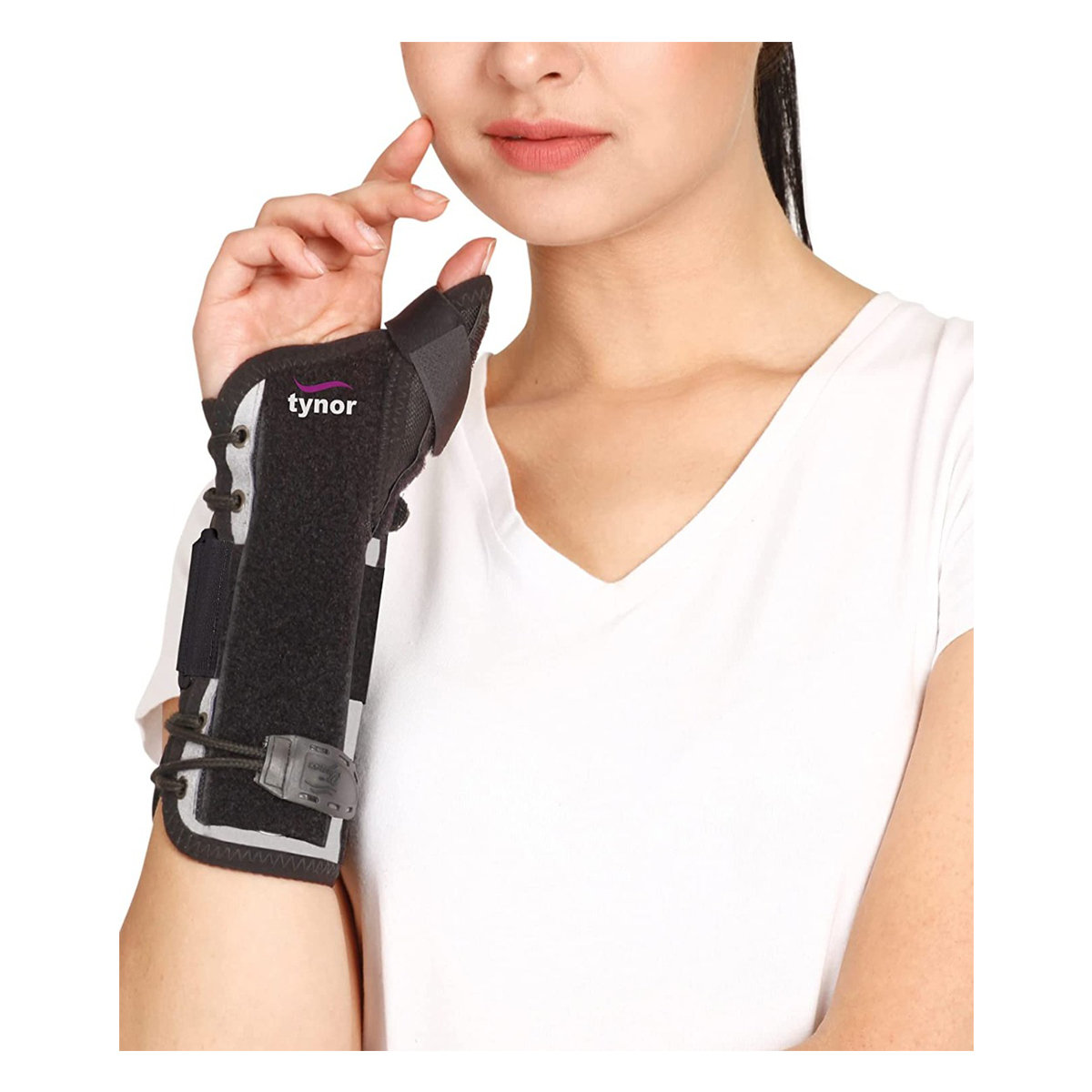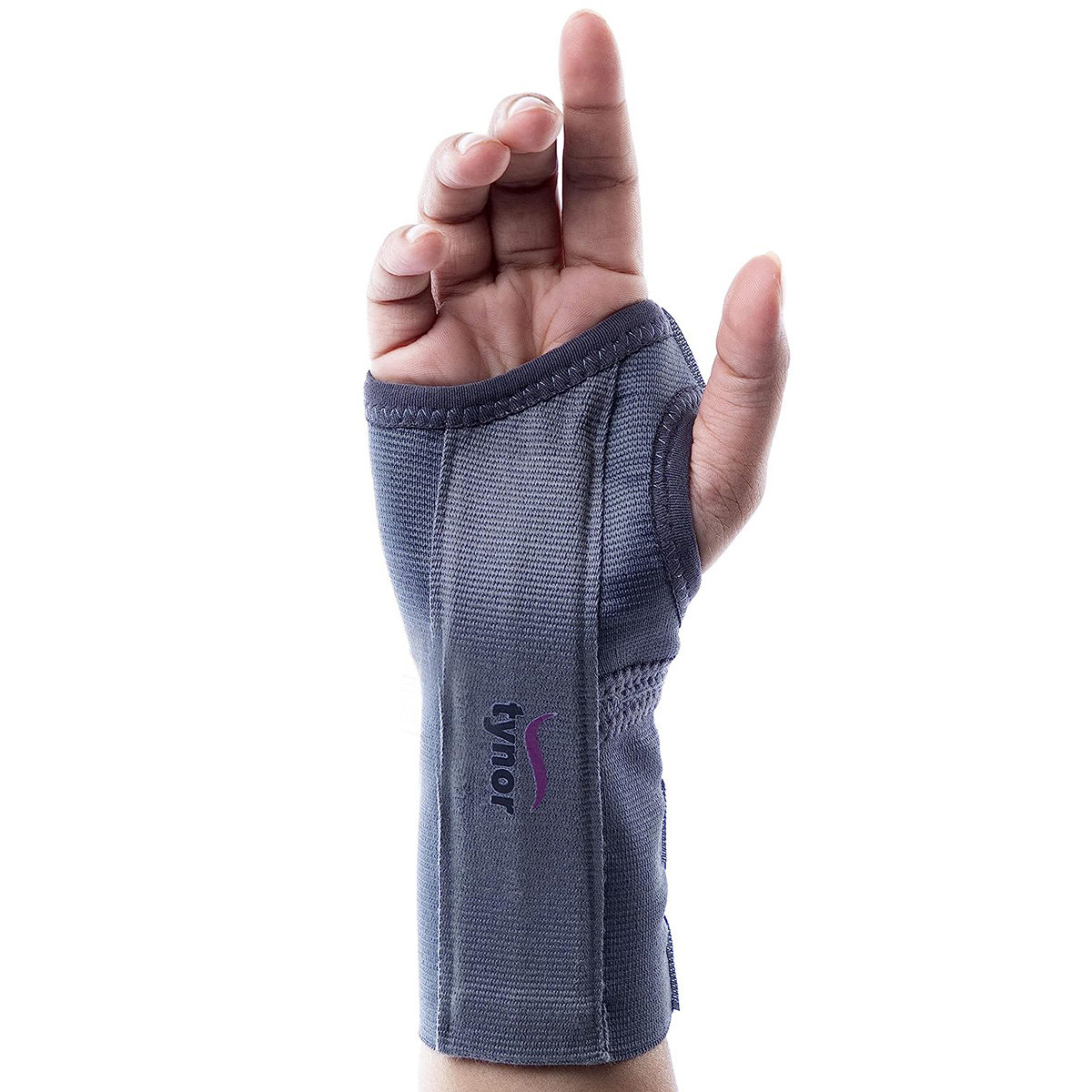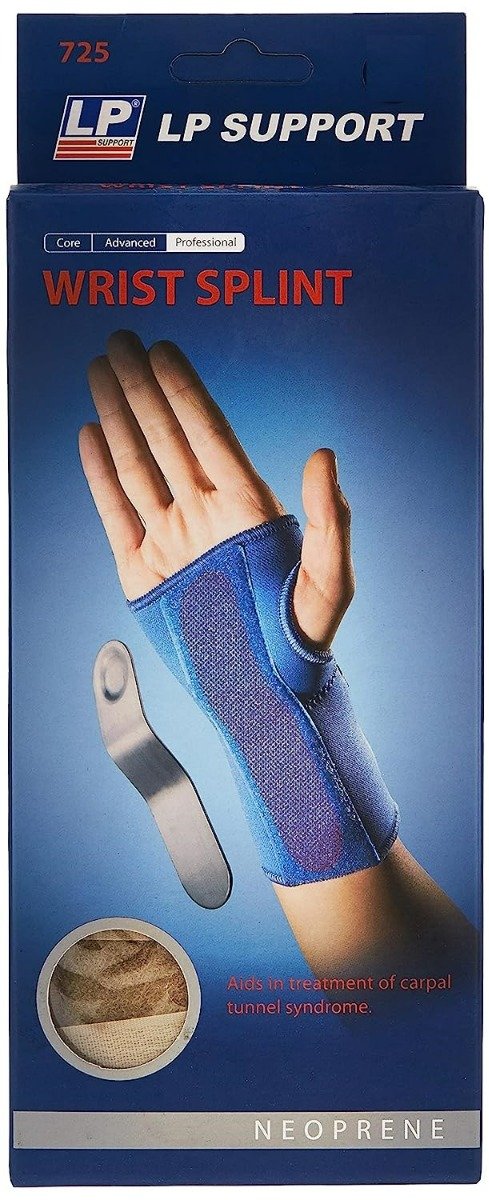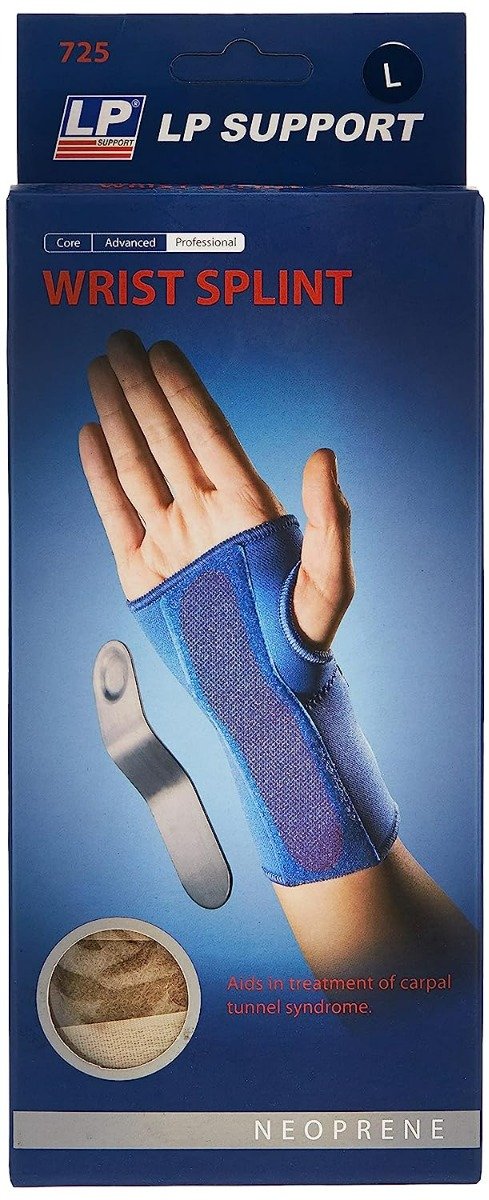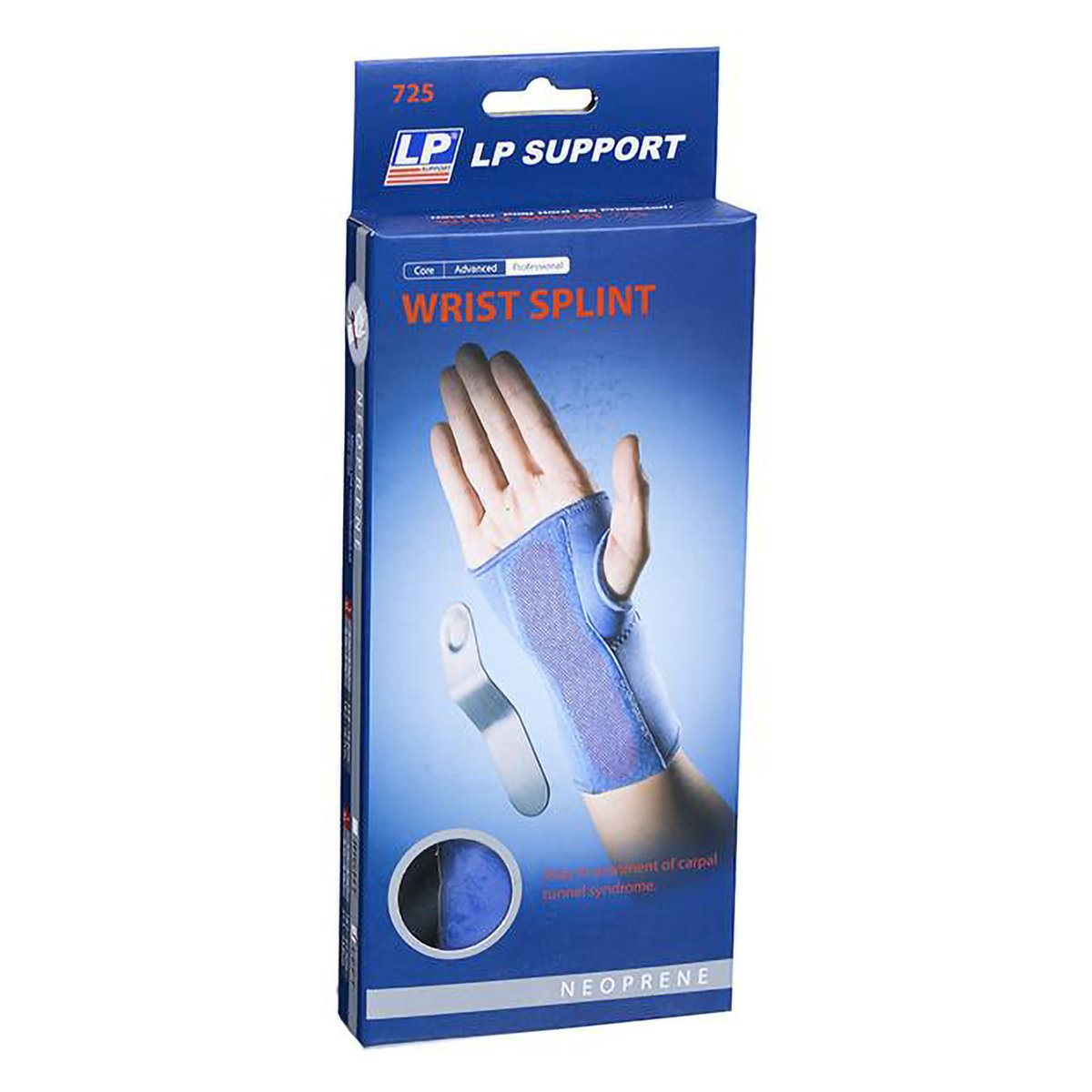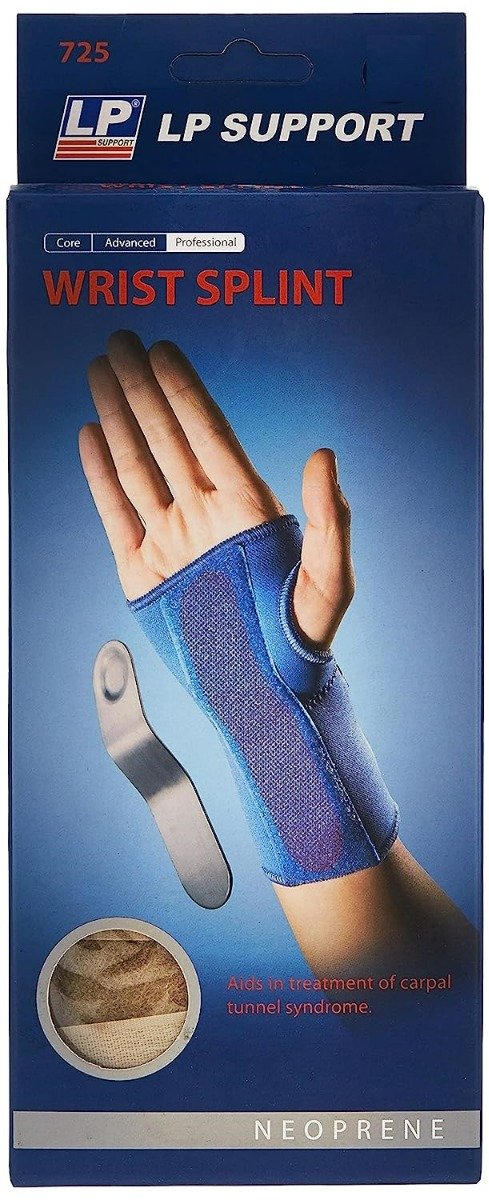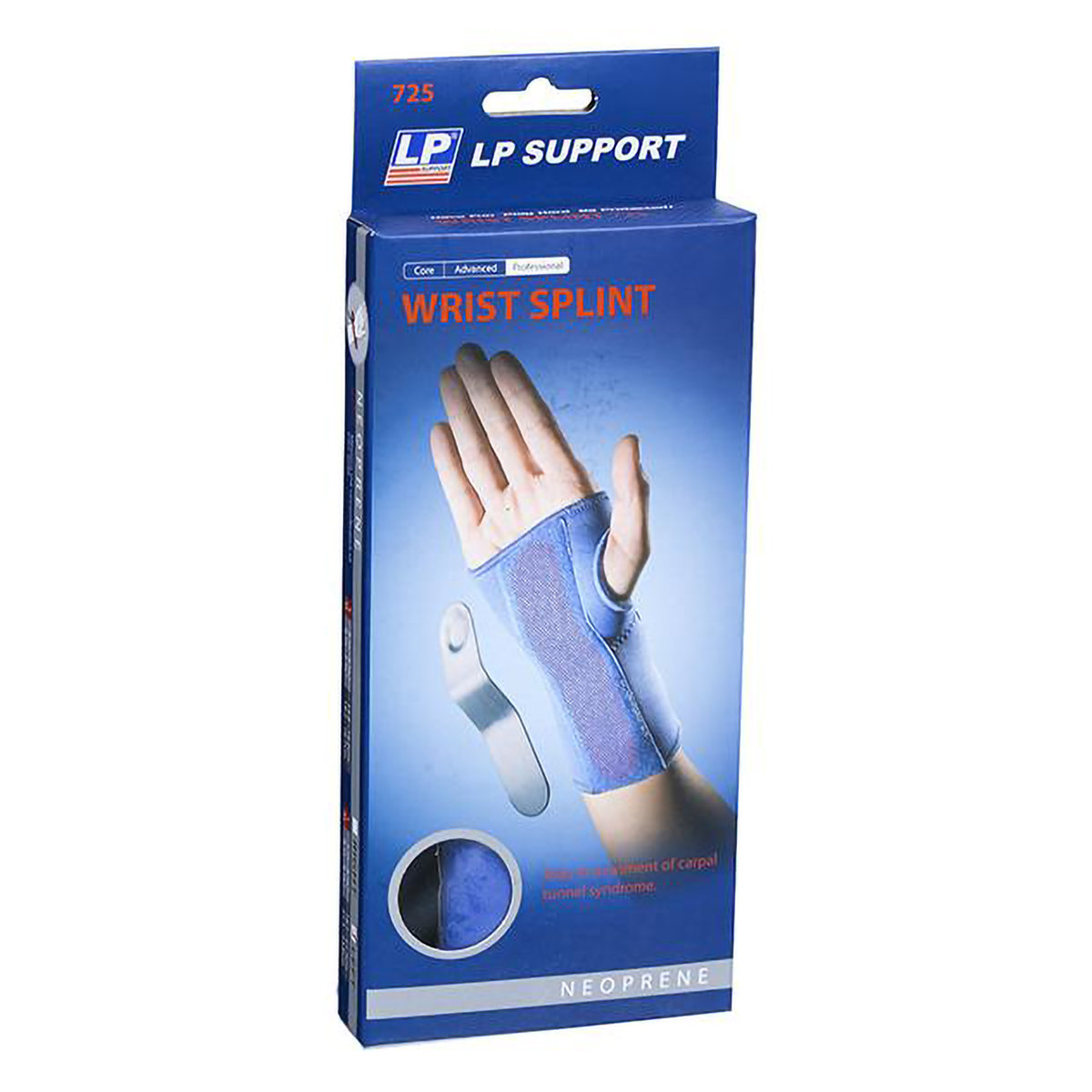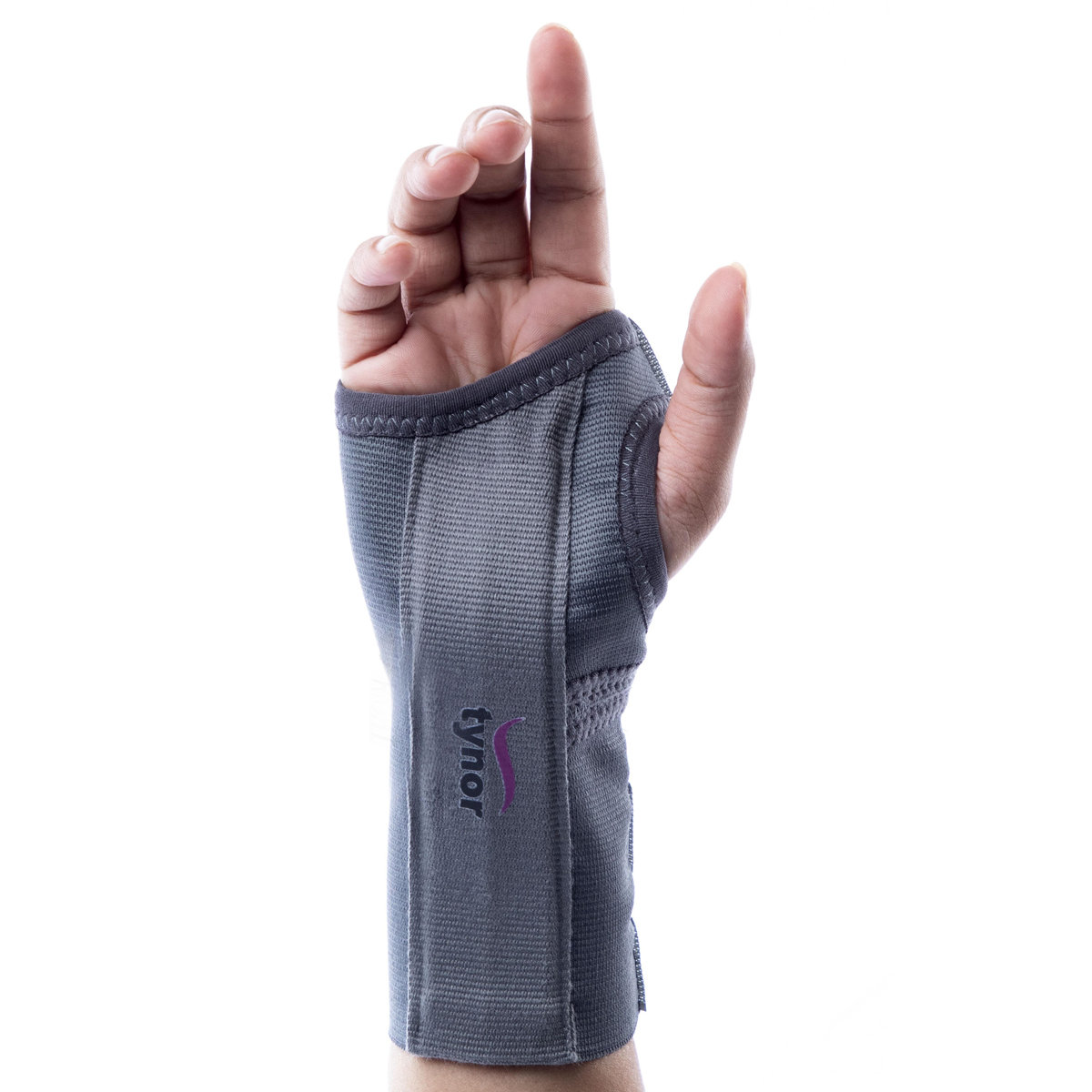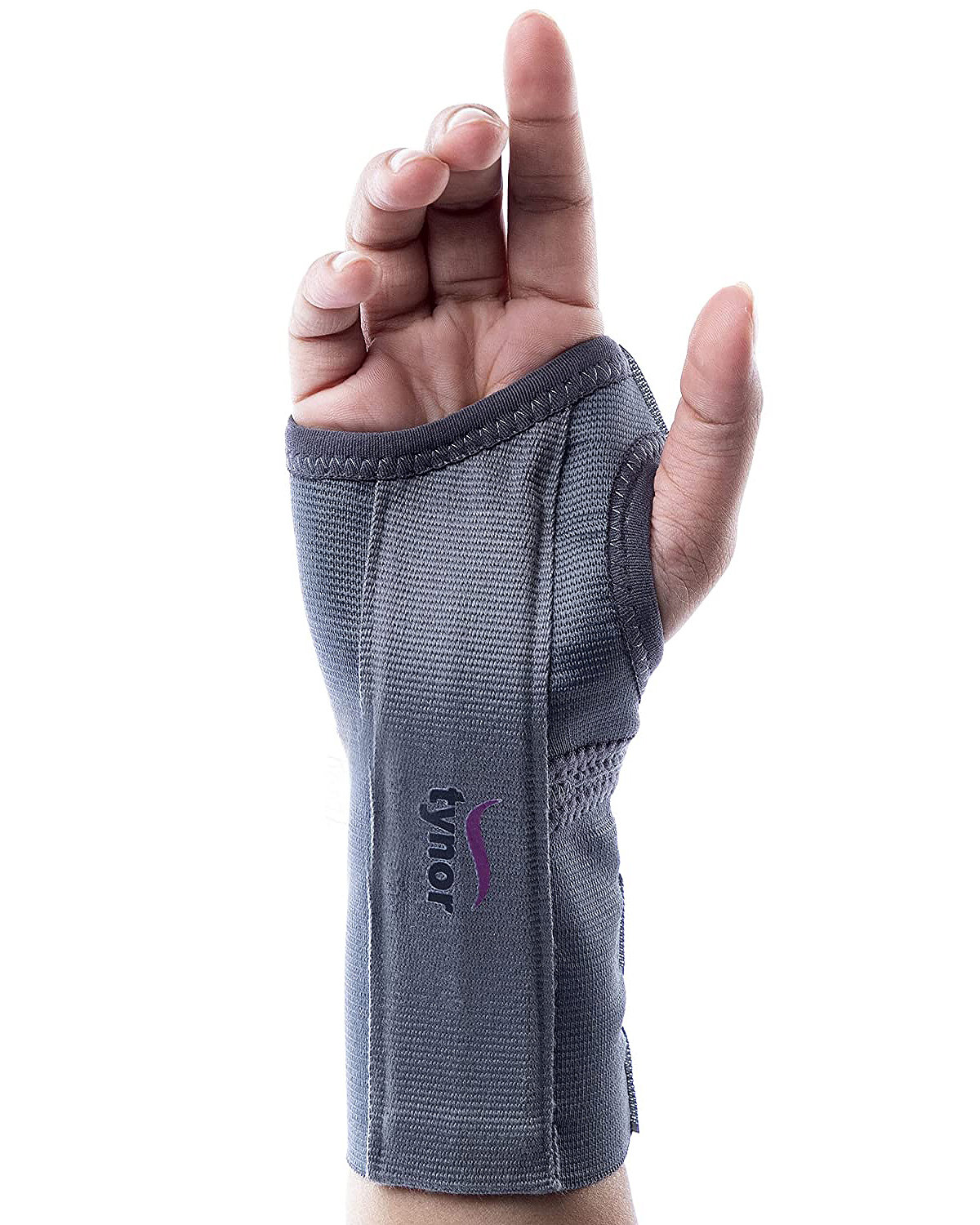Tynor Wrist & Forearm Splint Left Hand Large, 1 Count
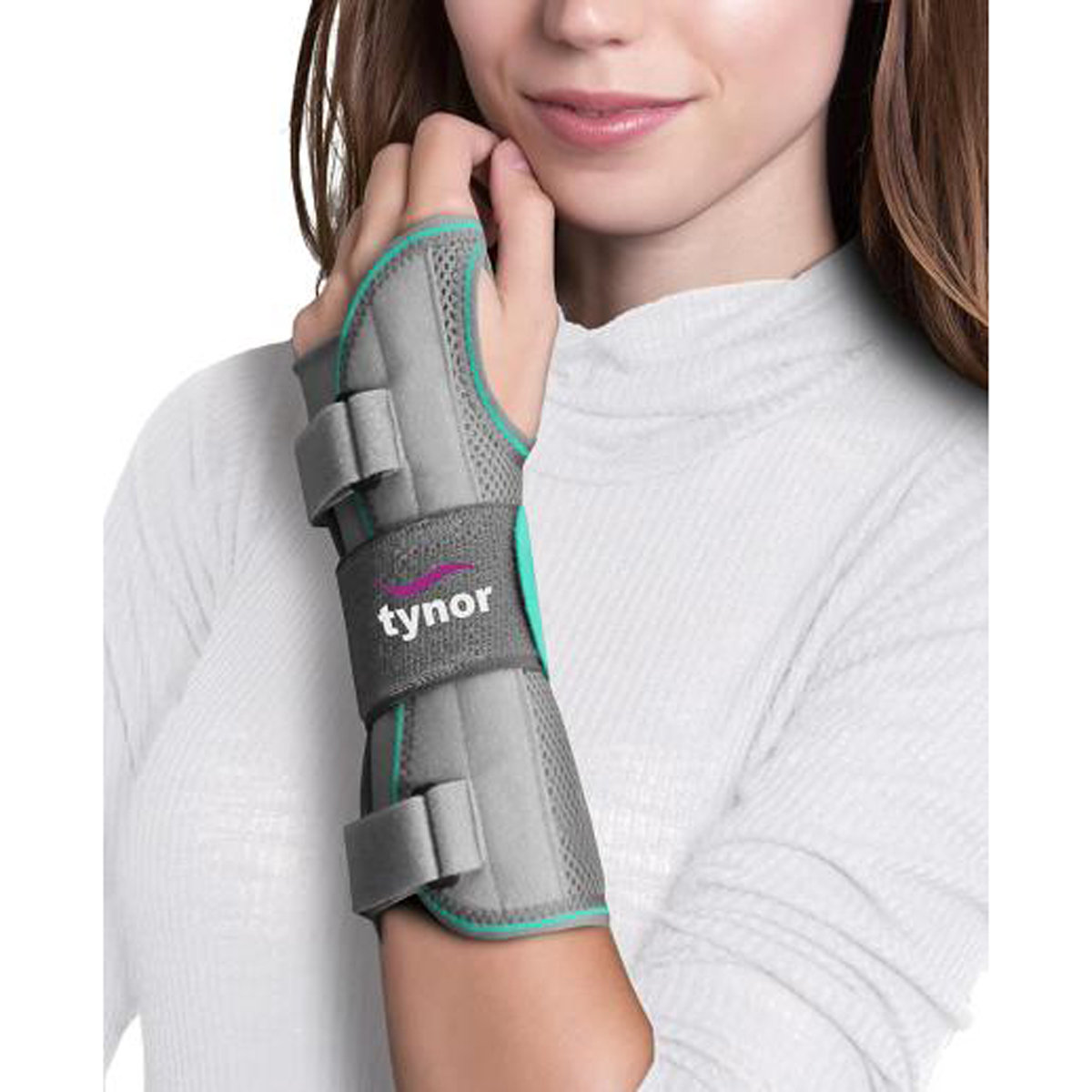
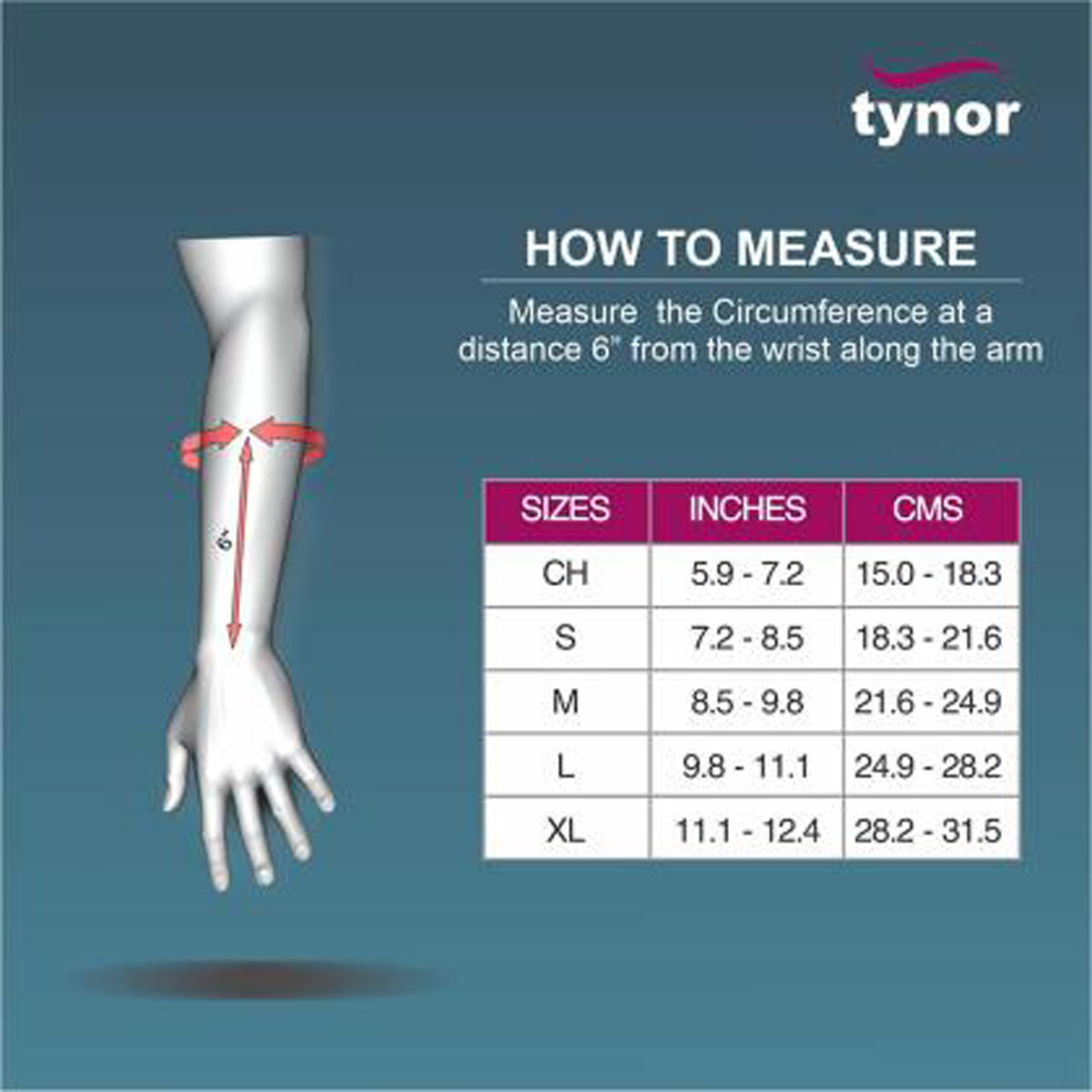
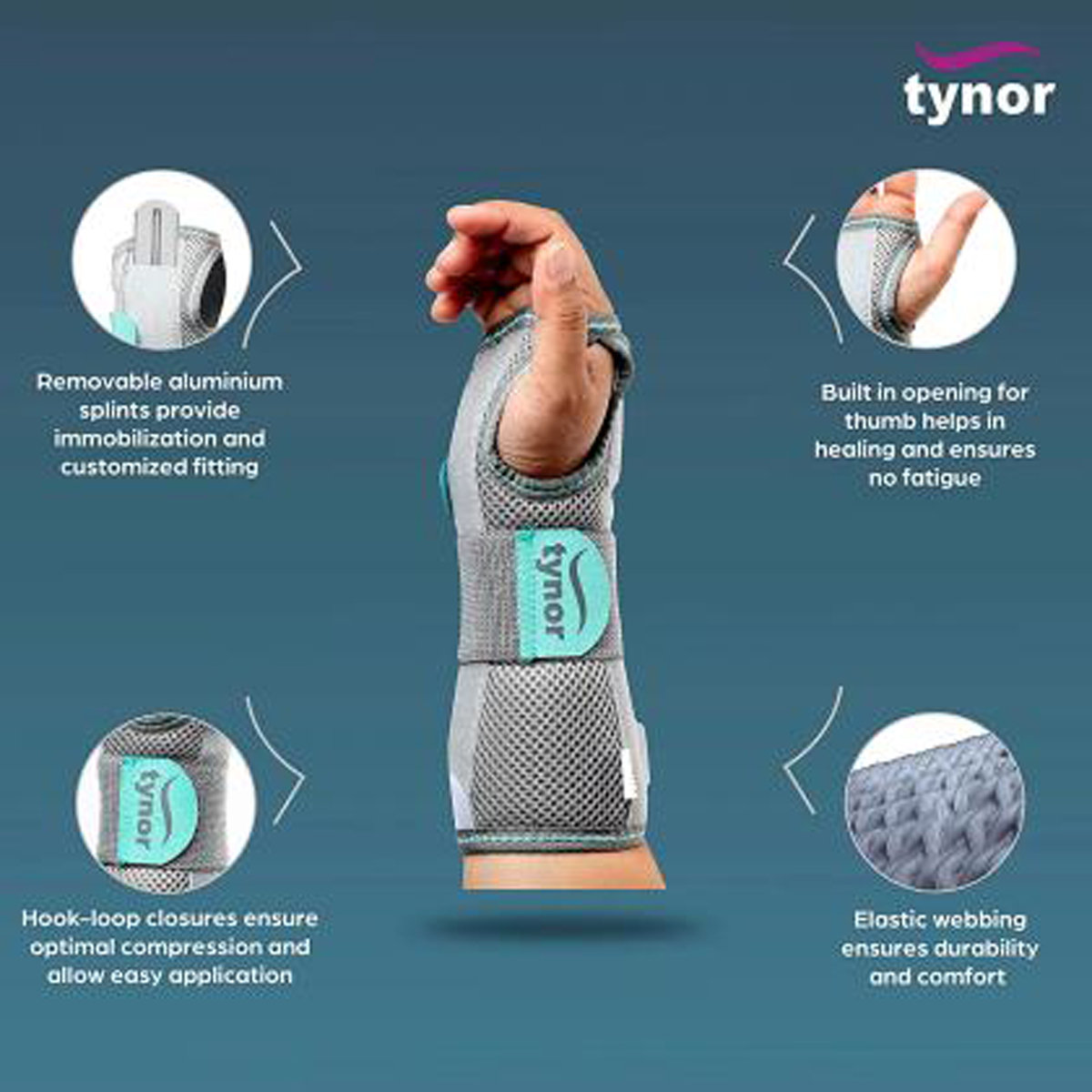
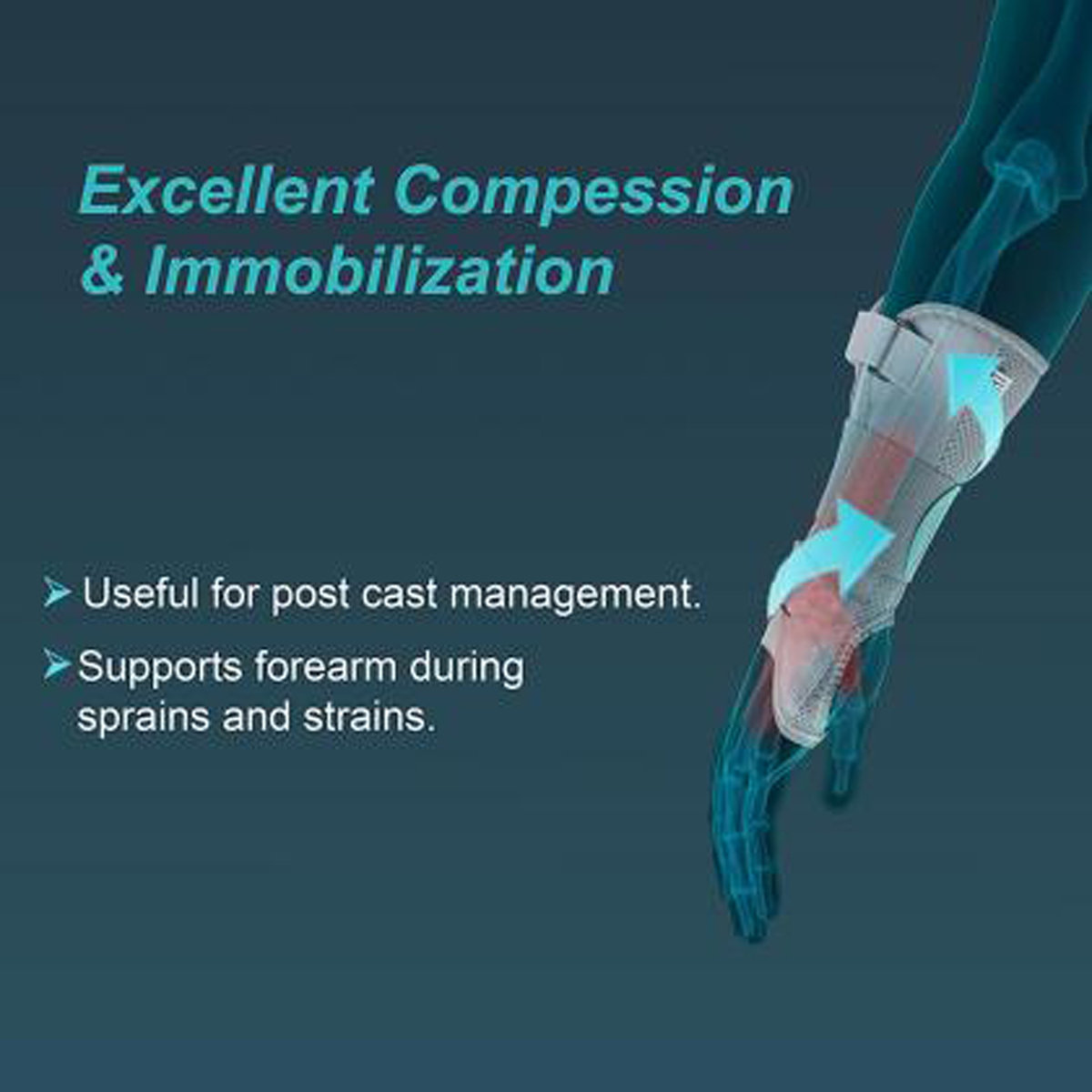
Selected variant:Left
- Left
- Right
Selected size:Large
- Large
- Small
- XL
₹475.2
MRP ₹72034% off
(Inclusive of all Taxes)
Get Free delivery (₹99)
Know Your Delivery Time
Provide Delivery Location

Secure Payment

India's Most Trusted Pharmacy

Genuine Products
Manufacturer/Marketer :
Consume Type :
Return Policy :
Description
Tynor Wrist and Forearm Splint Left Large, 1 Count is a high-quality orthopaedic device offering support and immobilisation for the wrist and forearm. It is especially suited for larger-sized wrists and forearms and is available in left-hand versions. This wrist and forearm splint is a versatile solution, ideal for conditions such as sprains, fractures, or for use in post-operative rehabilitation.
The design features adjustable straps for a personalised fit, lightweight and breathable materials for extended wear, and a padded lining for increased comfort. The rigid stays in the forearm brace provide firm support and immobilisation, making this tynor wrist and forearm splint a suitable tool for those with wrist and forearm injuries.
Features
- Adjustable strap design
- High breathability material
- Comfortable padded lining
- Rigid immobilisation stays
- Suitable for large-sized left wrist and forearm

Have a query?
Directions for Use
- Start by carefully unfolding Tynor wrist and forearm splint.
- Position the rigid part of the splint along the underside of your forearm, stretching from your elbow to your wrist.
- Fasten the adjustable straps around your arm, ensuring the fit is snug but not overly tight.
- The splint should feel supportive but not restrictive to circulation or movement of your fingers.
- Wear this brace as directed by your healthcare professional.
Key Benefits
- Personalised Comfort: With adjustable straps, Tynor wrist and forearm splint can be tailored to fit your individual needs. This allows for a more comfortable fit, reducing the risk of further injury and allowing for more effective recovery.
- Durable Support: The rigid stays within the forearm brace provide firm support and immobilisation. This prevents unnecessary movement, easing discomfort and promoting quicker healing.
- Optimal Comfort: Tynor wrist and forearm splint is lined with foam padding which provides additional comfort during wear. This makes long-term use more manageable, limiting any discomfort usually associated with similar devices.
- Enhanced Breathability: Tynor forearm splint features a breathable mesh lining. This feature promotes air circulation around the wrist and forearm, reducing sweat build-up and ensuring the skin remains comfortable during extended wear.
- Versatile Application: Tynor wrist and forearm splint can be used to support various conditions, including sprains, fractures, or post-operative rehabilitation. Its flexible use ensures it can cater to a wide range of needs, providing comprehensive support for your wrist and forearm.
Safety Information
Do not tighten the straps excessively as it may hamper blood circulation. If you experience any discomfort or pain while wearing the splint, remove it immediately and consult a healthcare professional. Do not modify or alter the product in any way.
FAQs
It is primarily used to provide support and immobilisation to the affected area. It can aid in healing various conditions such as sprains, fractures, and is also beneficial during post-operative rehabilitation.
The duration for which you should wear a wrist splint largely depends on your specific condition and your doctor's advice. However, typically, for severe injuries, you might need to wear the splint most of the day and night.
It provides firm support and helps immobilise the wrist and forearm in cases of injury or post-surgical recovery. Its adjustable, comfortable, lightweight design makes it ideal for extended wear.
It provides support to the muscles and bones, reducing strain and aiding in the healing process. By limiting movement, it allows the injured area to heal and recover.
Yes, you can wear the splint while sleeping if advised by your doctor. This can provide additional support and prevent further injury from unintentional movements during sleep.
Long-term wear can cause the joints to become stiff and the muscles to weaken; so it is essential that the wrist is used as usual when you are not wearing the splint to keep flexibility and strength.
Country of origin
Manufacturer/Marketer address
Alternatives
Similar Products
Disclaimer
Buy best Health Devices products by
Others
VISSCO
Tynor
FLAMINGO
DOCTOR S CHOICE
ROMSONS
DYNAMIC
MGRM
DYNA
ACURA
ACCUSURE
APOLLO PHARMACY
STAR
BEURER
Hansaplast
RENEWA
Neolife
LP
DR. MOREPEN
Omron
ONETOUCH
ACCU-CHEK
NIRVANA
SURGICARE
BD
CIPLA
APOLLO LIFE
BSN
EQUINOX
DR. TRUST
VARICOMED
MEDIGRIP
BPL
ADONIS
Acturaa
Contour Plus
Kanam
LEEFORD
SAMSON
BEATO
C-MED
PORTEX
AYUR
CONTROL D
DR. SAYANI S
Hicks
LATEX
3M
AMBICA
CUTICELL
DIAMOND
DR. ODIN
EASYCARE
MEDTECH
TOP
VINJOH
FreeStyle
GLOVEON
LEUKOPLAST
MEDICA
POLYMED
i-know
CURAPORE
DATT
LUPIN
MANKIND
MUN HEALTH
NORMA
SEGO
Swiss Criticure
VASOFIX
VIAGGI
AKTIVE
APOLLO
GLUCOCARD
JELONET
MEDICUBE
MEDISOFT
MEDLINE
MICROPORE
Mypurmist
NAULAKHA
NULIFE
PHILIPS
Skyline
VICRYL
VOGMASK
BACTIGRAS
BLOOD
COLOPLAST
COVIFIND
CUTISORB
DETTOL
DISPO VAN
ENCORE
Easylife
FRESINUS
GODREJ
GYPSONA
HALEMED
Vissco Rehabilitation Aids Pvt Ltd
Tynor Orthotics Pvt Ltd
Dynamic Techno Medicals
Ascent Meditech Ltd
Medsmart
MGRM Medicare Pvt Ltd
ACURA CARE PHARMACEUTICALS
Microgene Diagnostic Systems (P) Ltd
STAR ENTERPRISES
Romsons Scientific & Surgical Pvt Ltd
Dr Sayani's Health Care Pvt Ltd
Beurer Healthcare Llp
Beiersdorf (india) Pvt Ltd
Bsn Medical Pvt Ltd
AADHAR MEDICARE PVT LTD
Lp Support India
Kanam Latex Industries Pvt Ltd
Morepen Laboratories Ltd
Nirvana India Pvt Ltd
LIFESCAN MEDICAL DEVICES INDIA PVT LTD
Omron Healthcare India Pvt Ltd
Roche Diagnostics India Pvt Ltd
APOLLO HEALTHCO LIMITED
Becton Dickinson India Pvt Ltd
Adonis Laboratories Pvt Ltd
Equinox Overseas Pvt Ltd
R M Swellcure Therapies Pvt Ltd
Smith & Nephew Healthcare Pvt Ltd
VARIMED MEDIKAL SAN
Apollo Healthco Limited
CIPLA PHARMA LIFESCIENCES LTD.
Precision Coatings Pvt Ltd
Smiths Medical
Ambica Pharma
DYNA TECHNO MEDICAL PVT LTD
Ascensia Diabetes Care India Pvt Ltd
Leeford Health Care Ltd
Mun Health Product India Pvt Ltd
SAMSON SCIENTIFICS & SURGICALS
Siddivinayak Enterprises
B Braun Melsungen AG
CHALLA PHARMA AND SURGICALS
HEALTH ARX TECHNOLOGIES PVT LTD
Johnson & Johnson Pvt Ltd
NURECA LIMITED, INDIA
R . K . COMPANY
RAINBOW HEALTH AND FOOT CARE INDUSTRIES
ACTURAA INDIA PVT LTD
Haiden Technology Pvt Ltd
Hicks Thermoetek India Ltd
Intellio Healthcare Pvt Ltd
Mankind Pharma Pvt Ltd
Threpsi Solutions Pvt Ltd
ABBOTT HEALTHCARE PVT LTD
ANSELL HEALTHCARE PRODUCT LLC
DR.ODIN HOME HEALTHCARE DEVICES
Easycare Medical Products Co Ltd
MEDITECH PHARMA
MICRO RUBBER INDUSTRIES PVT LTD.
Piramal Enterprises Ltd
Poly Medicure Ltd
REGENXGEN BIOSOLUTIONS PRIVATE LIMITED
TELEFLEX MEDICAL PRIVATE LIMITED
THEA TEX HEALTHCARE INDIA PVT LTD
Vinjoh Healthcare Pvt Ltd
XTRACARE PRODUCTS PVT. LTD
DR GROVER EYE HOSPITAL PVT LTD
Jeevansri Health Product
Lupin Ltd
NORMA D N D PRODUCTS PVT LTD
OPTIMA MEDITECH PVT. LTD.
Top Corporation
Cipla Ltd
DATT MEDIPRODUCTS LTD
Glowria Inc
Goldwin Medicare Ltd
MOREPEN LABORATORIES LTD.
Medicare Hygiene Ltd
Neptune Lifesciences
Swiss Criticure
3M India Ltd
ACME PHARMACEUTICALS PVT LTD
Arkray Healthcare Pvt Ltd
Cipla Health Ltd
Coloplast Corporation
Datt Mediproducts Pvt Ltd
Hollister Incorporated
Philips India Ltd
SAFE LIFE SCIENCES PHARMACEUTICALS
Seasons Healthcare Ltd
Surgiwear
TOTAL ORTHO CARE
Viggo Medical Device India Pvt Ltd
ZENERIS PHARMA PVT LTD
Abbott India Ltd
Acs Pharmaceuticals
CONCEPTRENEUR VENTURE PVT. LTD.
Entero Healthcare Solution Pvt Ltd
Godrej Consumer Products Ltd
Haledew Remedies
HOSPITAL SUPPLIES
Stockings
Knee Cap
Gloves
Knee Support
Bandage
Cervical Collar
Anti Virus FaceMask
BP Monitor
Dressing
Elbow Support
Lumbar Belt
Ankle Support
Test Strips
Walking Aid
Abdominal Belt
Arm Sling
Knee Brace
Adhesive Tape
Ankle Binder
Glucometer
Back Support
Wrist Splint
Abdominal Support
Wrist Brace
Insoles
Knee Immobiliser
Shoulder Immobilizer
Finger Splint
Nebulizer
Thermometer
Weighing Machine
Lumbar Support
Neck Pillow
Rib Belt
Back Brace
Dressing Gauze
Leg Support
Pulse Oximeter
Ankle Brace
Abdominal Binder
Knee Wrap
Lancets
Wrist Support
Heel Cushion
Hot Water Bag
Hernia Belt
Hot & Cold Gel Pack
Shoulder Support
Commode
Diabetic Footwear
Heating Pad
Oxygen Mask
Clavical Brace
Pregnancy Kit
Ankle Warp
Chest Binder
Heating Belt
BODY MASSAGER
Exercise Band
Scrotal Support
Wrist Wrap
Elbow Brace
Lumbar Corset
Pelvic Binder
Socks
Soft Tape
Travel Pillow
Vaporizer
Walker Boot
Abdominal Corset
Arm Supports
Catheter
Exercise Ball
Posture Support
Arm Splint
Plaster
Cervical Support
Gauze Swab
Heel Cup
Seat Cushion
Stethoscope
Surgical Tape
Wheel Chair
Cool Pack
Face Shield
Inhaler
PPE Kit
Thigh Support
Wrist Binder
Bandage Strips
Cotton
Exerciser
Gym Ball
Oxygen Can
Steamer
Clavical Support
Covid Test Kit
Finger Cot
Humidifier



